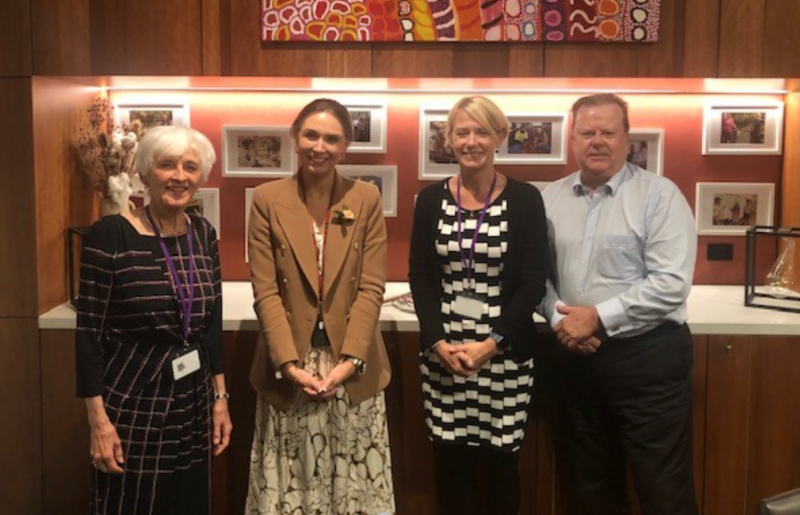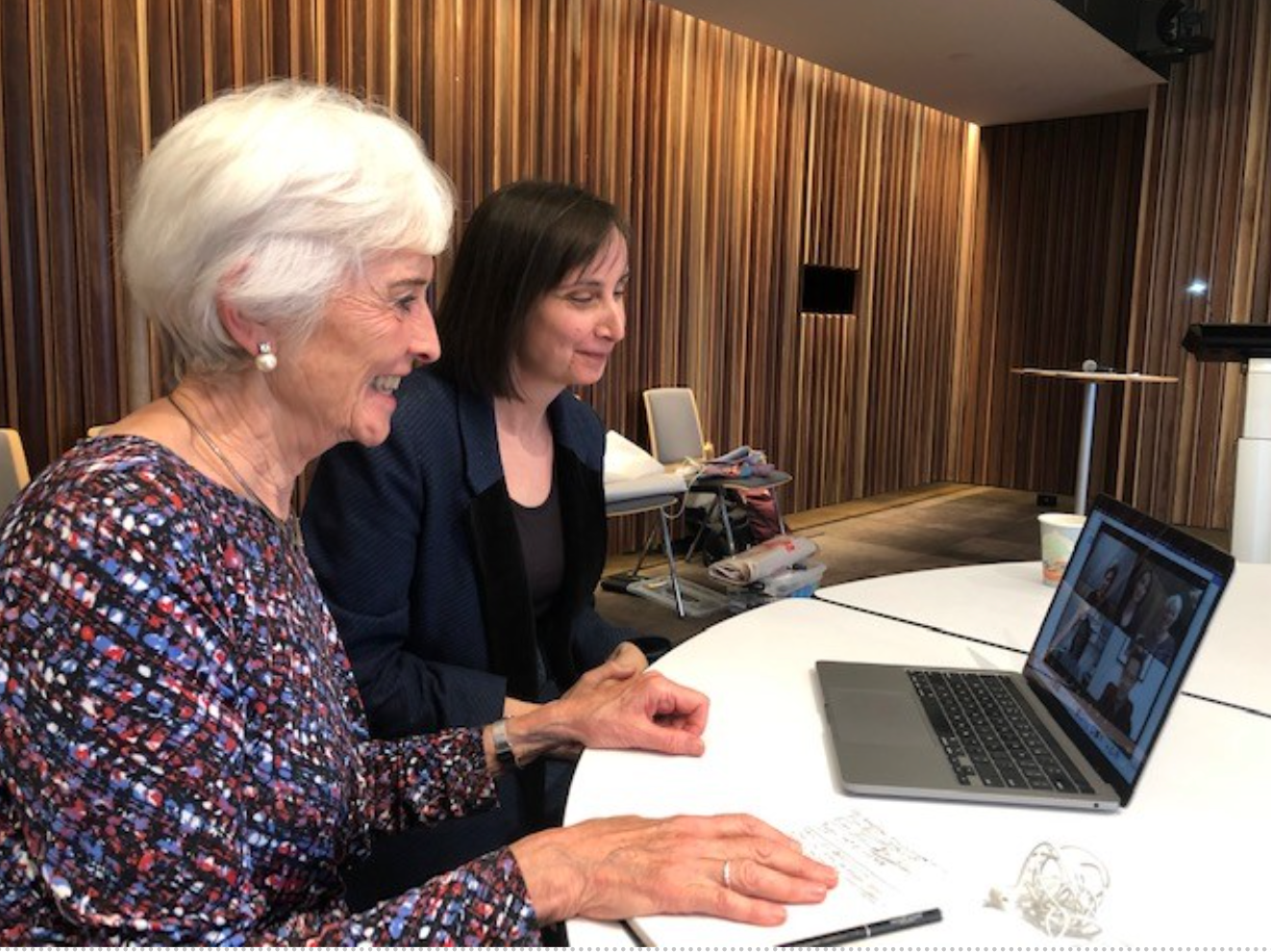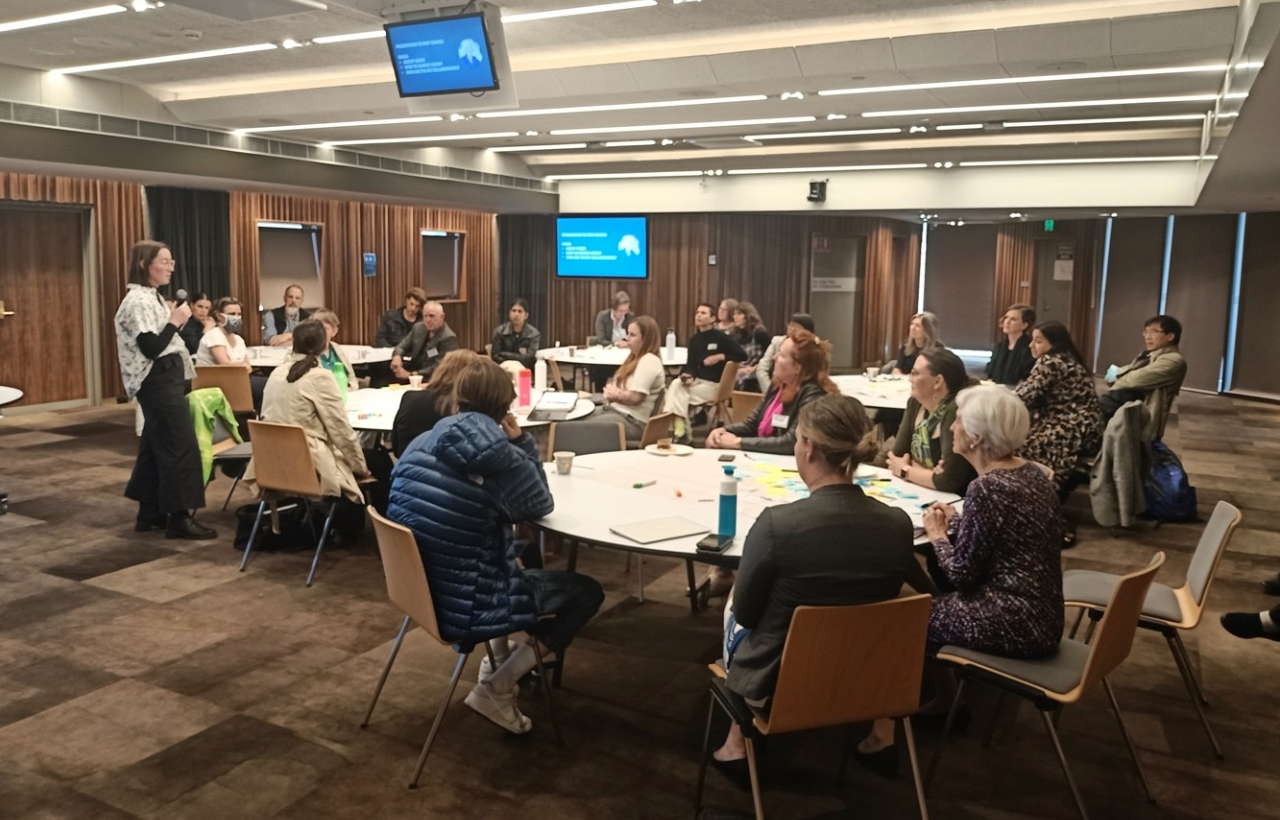Australia Part 5: Circular textiles
August 31, 2022
In this fifth edition of Jacqueline Cramer’s journey through Australia the focus is on circular textiles. With the upcoming National Clothing Product Stewardship scheme, similar to the Dutch extended responsibility scheme, this is a hot topic in Australia. Jacqueline gives her impressions of the two workshops on circular textiles organized by the Queensland University of Technology and the University of New South Wales. But there was more on the agenda: she gave a lecture on circular building and planning in relation to the Olympics that will take place in Australia in 2032 and met with the Minister of Environment Meaghan Scanlon.
Read the full blog below.
Picture: from left to right: Jacqueline Cramer, Meaghan Scanlon (Minister of the Environment), Marjon Wind (Honorary Consul of Queensland for the Netherlands) and Stephen Robertson (former Minister for the Labour party from 2001-2009 in various positions)

Facilitating a circular economy for textiles
The weeks in Australia pass by fast. I have already spent two weeks in Brisbane and leave in a few days to Melbourne for a last event on the Commonwealth Games (to be held in 2026) organized by the consultancy company the State of Matter. In Brisbane, I had again a variety of wonderful meetings, among which with the Minister of the Environment, the Honorable Meaghan Scanlon (see picture below) and the Governor of Queensland, Her Excellency, Jeannette Young. Both were very interested in circular economy, the opportunities for Australia and the lessons learned from the Netherlands.
I also gave lectures on circular procurement for a cross-government audience, on circular planning and building for those involved in preparing for the Olympics in 2032 and on the integration of circularity principles in the development of Brisbane airport. For the Dutch Chamber of Commerce and for a broad audience invited by Queensland University of Technology I talked about circular economy in general and I gave a lecture on circular textiles. As Queensland is one of the states paying relatively much attention to circular textiles, I’m focussing upon those initiatives more extensively in this blog and will also include my findings about circular textiles in Sydney and Melbourne.

A key driver for the growing interest in circular textiles is the upcoming National Clothing Product Stewardship scheme, which the Australian government aims to implement. Its objective and structure are quite comparable with the Dutch Extended Responsibility scheme. By introducing a fee on the price of clothing, the activities to organize circular textiles can be paid for. The Australian Fashion Council has received funding ($ 1 million) to develop this scheme in collaboration with consortium partners (see the link to the program: www.ausfashioncouncil.com). The Council aims to improve textiles’ design, recovery, reuse and recycling and provide a roadmap to 2030 for clothing circularity in Australia in line with National Waste Policy Action Plan targets. The Product Stewardship Scheme for clothing is due to be finalized in March 2023. I discussed online with representatives of the Council (see picture with Assoc Prof Alice Payne from QUT) the main problems they encounter, among which is the voluntary nature of the scheme. Contrary to the Dutch scheme being prepared, it seems hard to make the scheme mandatory. Every company has to be approached individually to ask for a commitment to the scheme.
I also actively participated in a workshop on circular textiles organized by the Queensland University of Technology. The aims of the workshop were to create stronger circular networks in South–East Queensland for circularity in textiles and empower circular transition brokers. The audience consisted of diverse participants from retailers, fashion brands, textile recyclers, researchers and select university students. Two Queensland government observers were also present. After my introductory presentation, Prof. Tiziana Ferrero-Regis delivered a marvellous presentation on the state of the art of circular textiles in Queensland and Australia in general. She showed the ecosystems of circular textiles being built or in the making on a map. This was a great start to discussing in subgroups the possibilities of accelerating circular textiles in Queensland with a varied audience. The debates were lively and to the point (see picture).
My role was – just as at other workshops – to summarize the main points that were discussed in the subgroups and formulate recommendations. I concluded that:
- Their vision on circular textiles is already quite clear. And their map that shows who does what on circular textiles in Queensland is great as a start.
- Their approach to build ecosystems on circular textiles in various places in Queensland is promising. Establishing ecosystems requires collaboration among different actors and preferably also the involvement of independent intermediaries (transition brokers) to align the actors and accelerate the process. I stated that it would be good to connect the various ecosystems at the state level and reach out to other states in Australia to join forces.
- Leading by example will inspire people. You can begin small and then expand.
- It is indispensable to bring back local manufacturing capabilities that have been outsourced abroad. The loop of textile should be closed as locally as possible.
- Provision of education in all kinds of ways (including social media) is key. It might be worthwhile to learn from the success of the Containers for Change program in Queensland and the social involvement encouraged by that initiative.
- The government may sponsor transition brokers and pilot projects and introduce legislation (among which, the right to repair).

Queensland has great potential to lead the transition to circular textiles. However, in other states I visited, nuclei of change can be found as well. For instance, in Sydney, a very focused workshop was held on ‘Examining Workwear in a Circular Economy’ at the University of New South Wales. Here too, I started with a lecture, particularly addressing the Dutch experiences with circular workwear, followed by a workshop. The group was smaller but very dedicated to discussing in depth the willingness to develop circular workwear.
The outcome of the meeting is input for a research program on circular uniforms to be carried out jointly with interested commissioning parties, some of which were present at the workshop. The Dutch experiences will be showcases that they may use, too. In any case, the Netherlands will continue to cooperate with the team in Sydney, just as with the people in Melbourne, where I also met a mix of researchers and companies, particularly the smaller ones.
In conclusion, the attention for circular textiles is growing in Australia, among others, due to the upcoming National Clothing Product Stewardship scheme and the growing number of bottom-up initiatives taken in various states. Particularly researchers are keen to embark on this circular journey in collaboration with proactive companies. There was clearly interest in collaborating with the Netherlands, particularly with companies with design solutions and technologies that are of great use in Australia. For instance, the Dutch Fiber sorting technology of Wieland, recycling technologies, reuse of materials options and the experiences with circular workwear were often mentioned. The cooperation between Australia and the Netherlands will be continued by the Dutch diplomatic missions and the Australian counterparts, particularly the Australian Circular Economy Hub.
